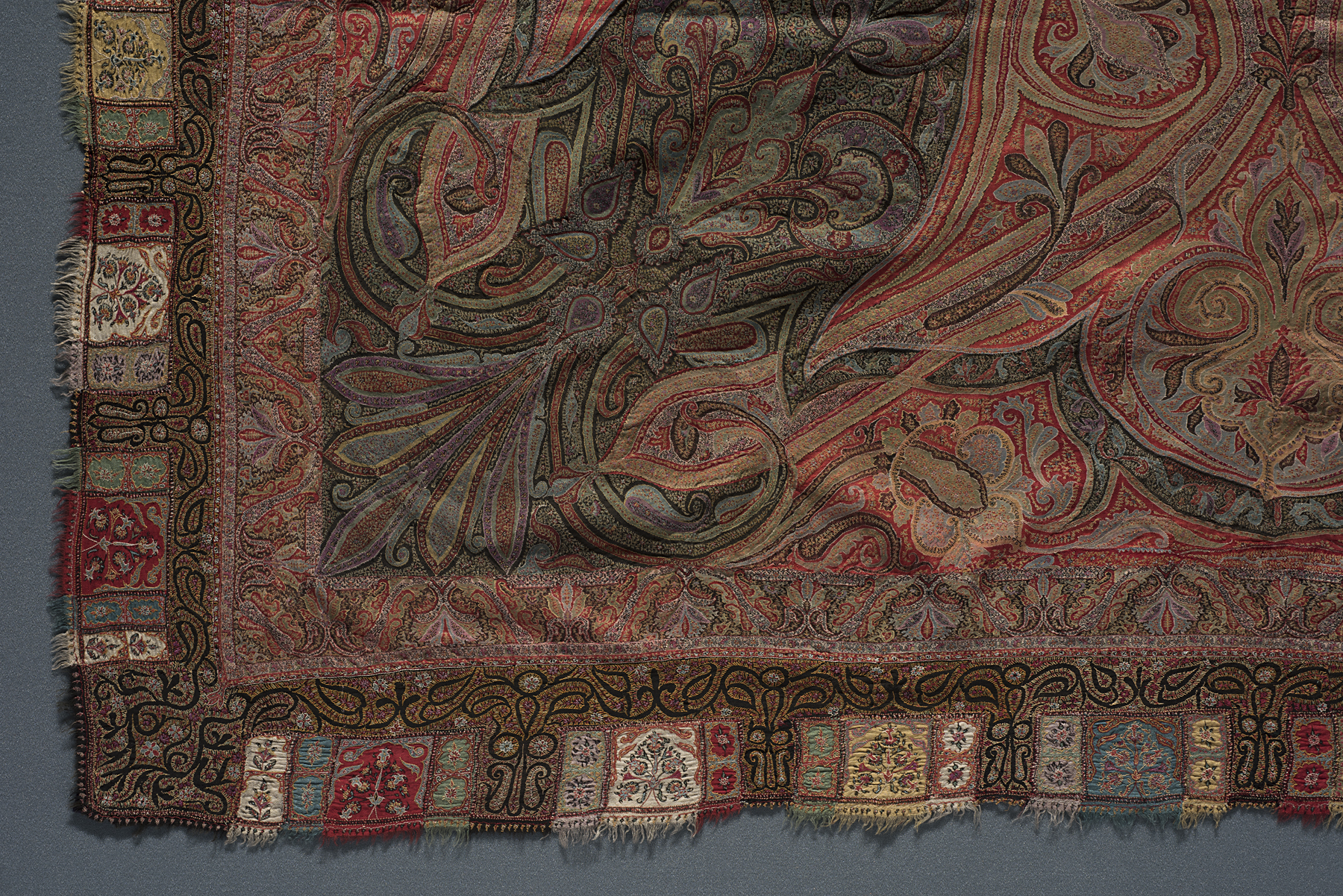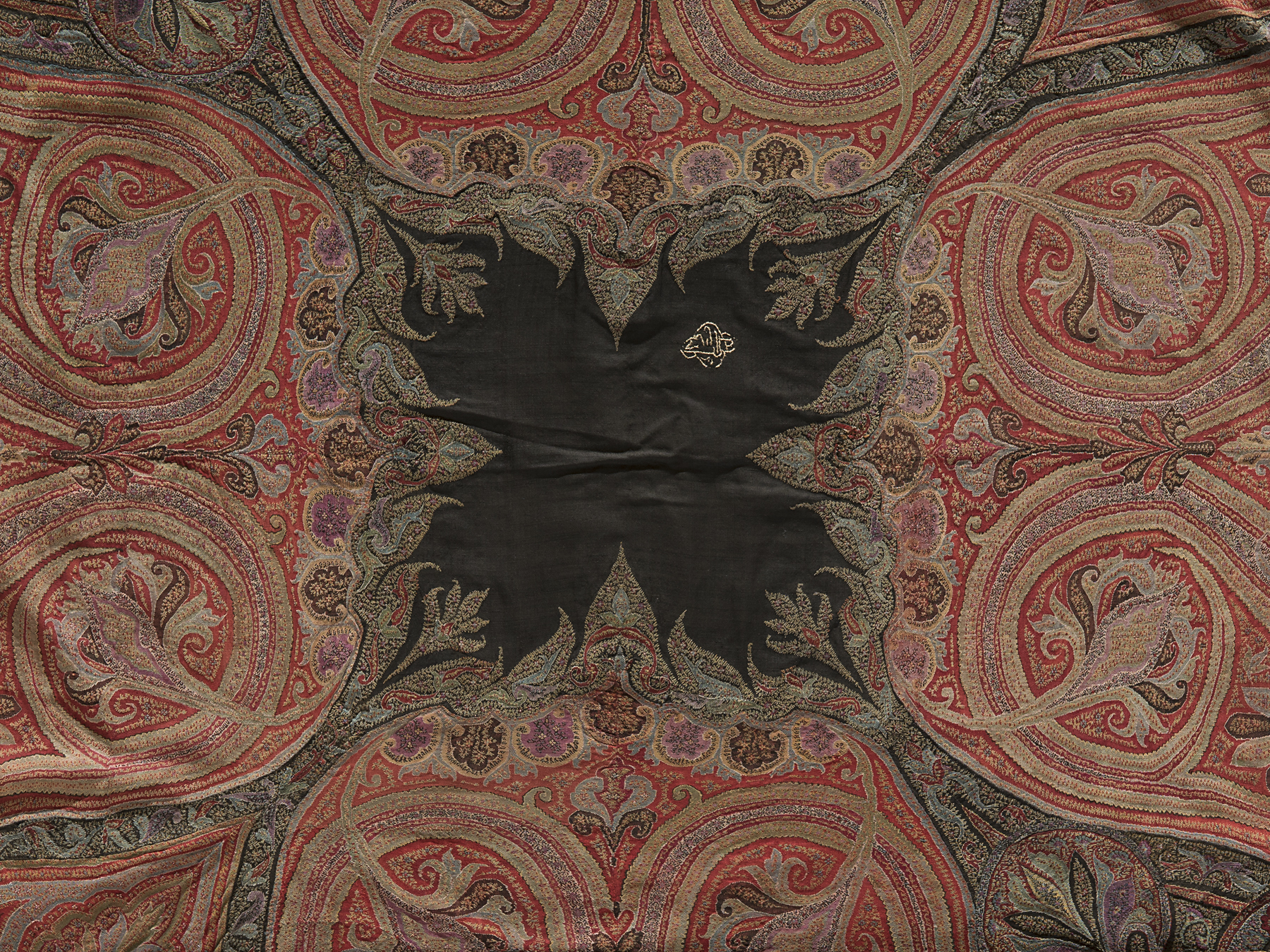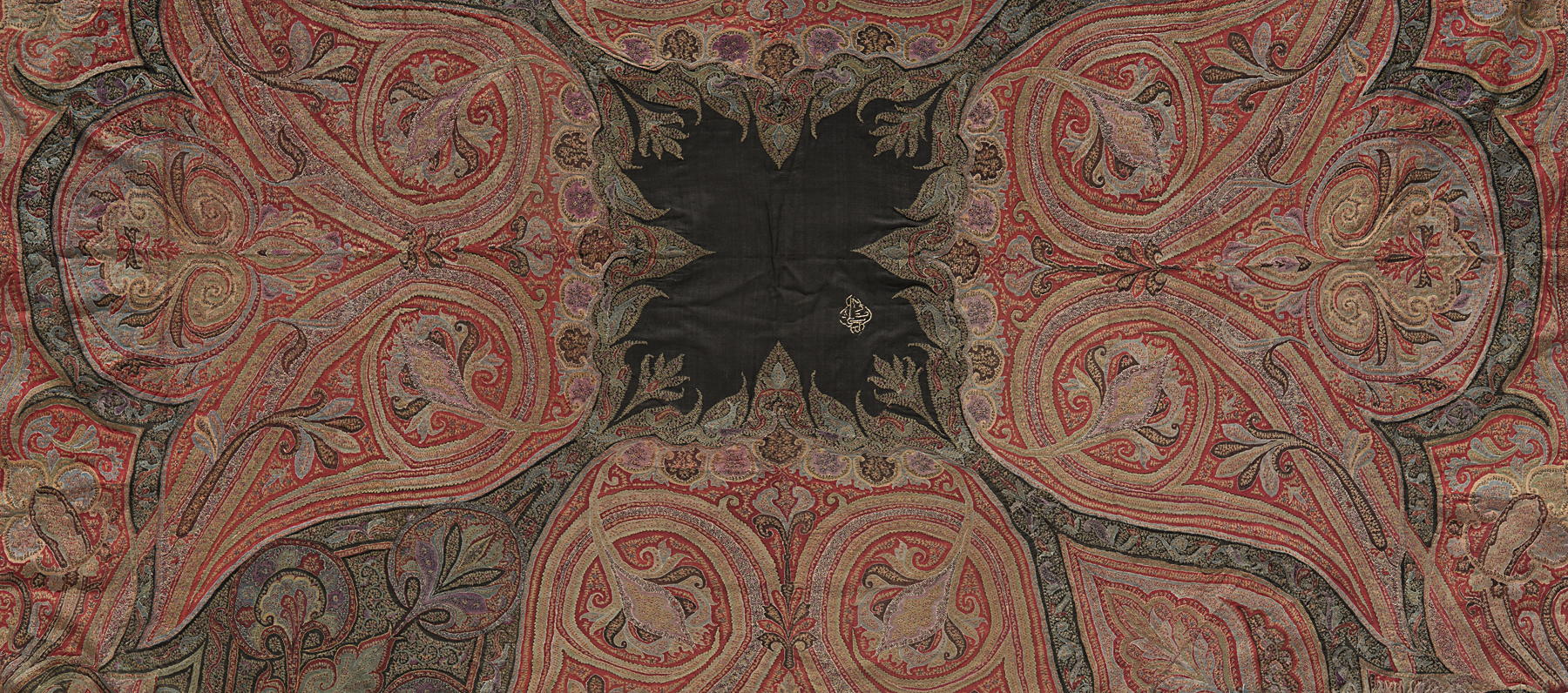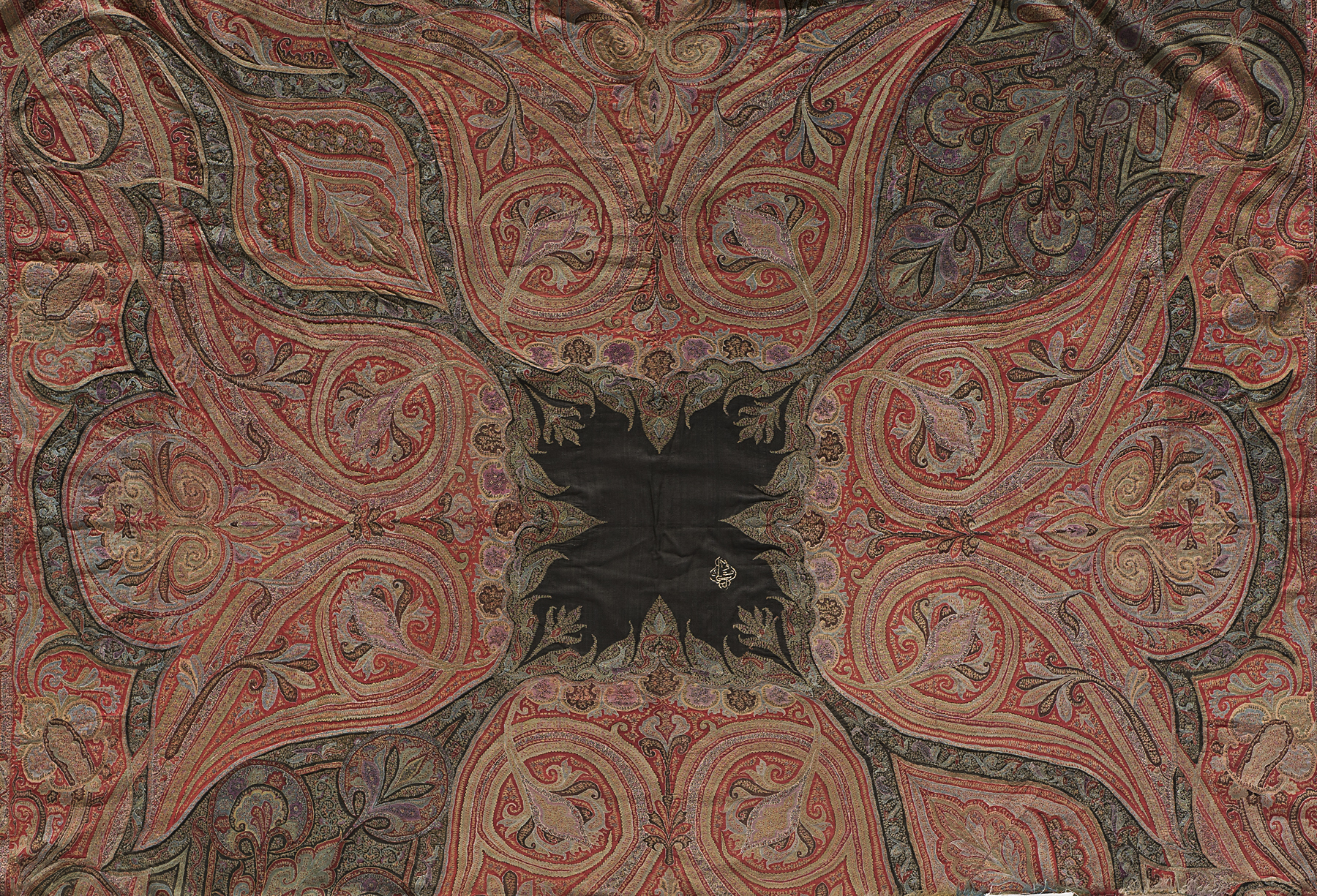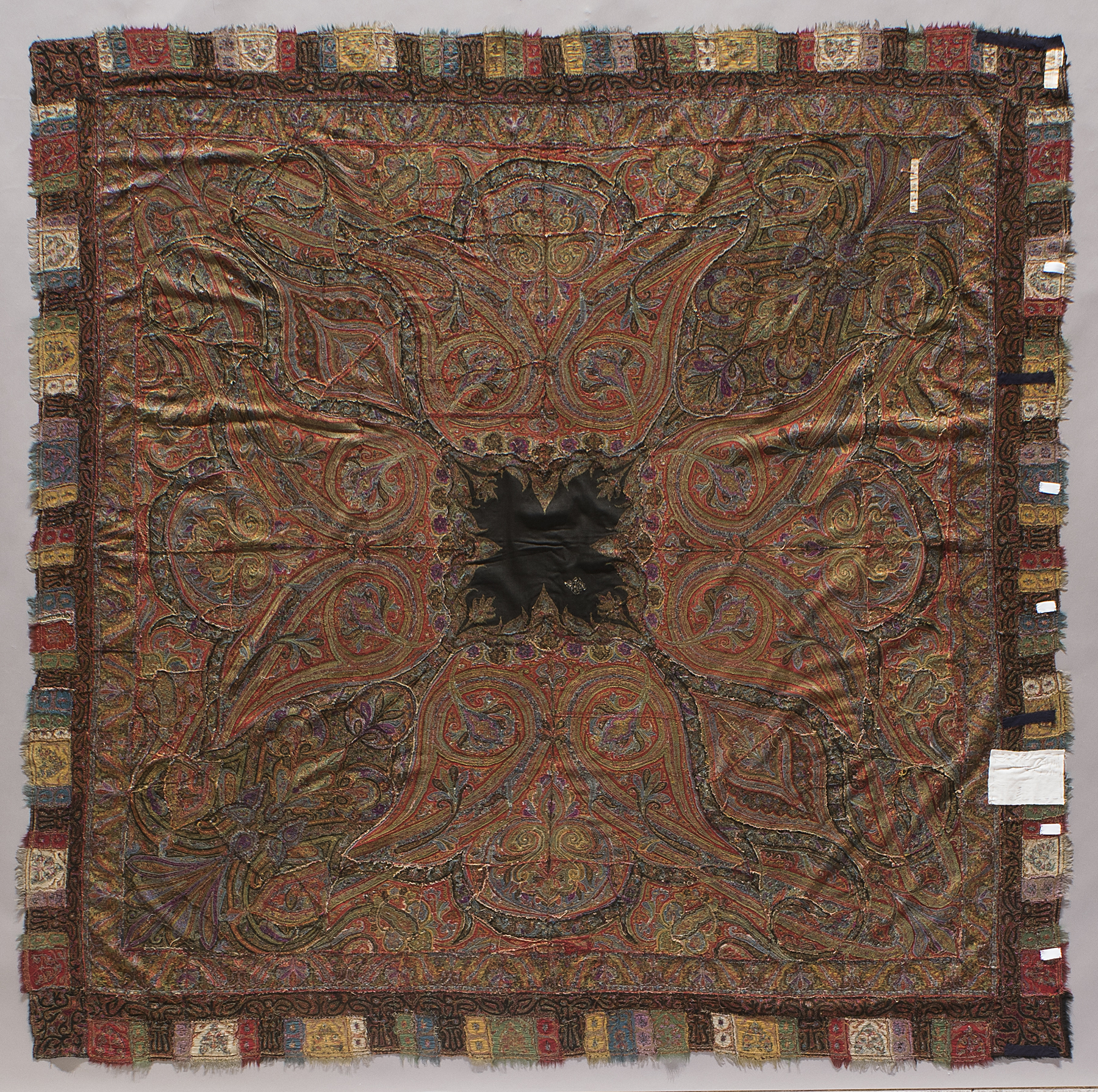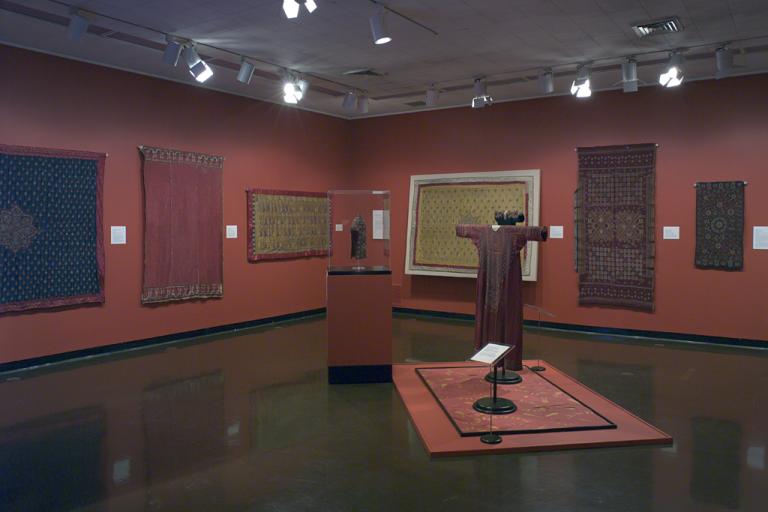Kashmir shawl, unknown maker from India or Pakistan
Artwork Overview
Kashmir shawl
, circa 1870
Where object was made: Kashmir or Punjab, India or Pakistan
Material/technique: wool; cashmere; embroidering; silk thread; twill tapestry
Dimensions:
Object Length/Width (Length x Width): 210 x 205 cm including fringe
Object Length/Width (Length x Width): 81 x 83 in
Object Length/Width (Length x Width): 210 x 205 cm including fringe
Object Length/Width (Length x Width): 81 x 83 in
Credit line: William Bridges Thayer Memorial
Accession number: 1928.0971
Not on display
If you wish to reproduce this image, please submit an image request


